Jen Black's Blog, page 35
February 23, 2019
THE BORDER REIVERS
 Those who live in the north of England know only too well who the Border Reivers were! They inhabited the counties that glare at each other across the English-Scottish Border: Northumberland, Cumbria and Durham; Berwickshire, Roxburghshire and Dumfriesshire.
Those who live in the north of England know only too well who the Border Reivers were! They inhabited the counties that glare at each other across the English-Scottish Border: Northumberland, Cumbria and Durham; Berwickshire, Roxburghshire and Dumfriesshire.The Pennines form the backbone of the Durham Dales and proved a barrier, though the Eden Valley provided an easy route to rich pickings. Every northerner knows the story of the monks at Blanchland in County Durham who cowered in their church as the Scots raiders passed by on their way home to Scotland. Relieved, they rang the bells in thanks. The Scots heard the bells, turned back and raided the little village hidden in its deep valley.
George MacDonald Fraser described the reivers in his book The Steel Bonnets: “not the most immediately lovable folk in the United Kingdom. Incomers may find them difficult to know; there is a tendency among them to be suspicious and taciturn, and the harsh Border voice, whether the accent is Scots or English, lends itself readily to derision and complaint. No doubt there are Cumbrians who are gay, frivolous folk, and Roxburghshire probably has its quota of fawning, polished sophisticates; they are in a minority, that is all.”
Qualities such as those he described were forged in harsh times which passed by most of Britain. From the late thirteenth century to the middle of the sixteenth, the Borders were frequently a war zone. During those times armies marched in both directions across the Border lands, burning, stealing and despoiling as they went, for armies must eat, and the people of the Borders bore the brunt of it.When the army seized a man’s crops and livestock, there was nothing he could do to support himself and his family but relieve his neighbours of the goods he needed. If the neighbour was in the same situation, then they joined forces and foraged further afield. Nationality was not a consideration in such desperate times; Scot raided Scot as readily as they robbed the English, and the English were not averse to raiding an English farm if needs must. Scots helped the English raid north of the Border and Englishmen aided Scots raids south of the Border. Families such as the Grahams had members straddling both sides of the line and no one ever knew for certain which side they would support on any given day.In times of peace, the raiding went on. Habits once formed, died hard. Feuds developed, some across the Border divide and some within it. The Maxwells feuded with the Johnstones in one of the bitterest and bloody battles known in Scotland, yet now no one knows how or why it began; possibly a power struggle for supremacy between two powerful tribes that turned the Debateable Land into a wasteland according to Lord Dacre in 1528. Twenty years later Lord Wharton was busily fanning the flames to secure England’s interests and both clan leaders found themselves in and out of English prisons on an almost regular basis.
National policy tried to stop the lawlessness. The Borders were divided into six administrative areas known as the Marches and England and Scotland each appointed three March Wardens whose task was to defend against invasion in time of war and put down crime and maintain law and order in peace time. Some were good men and others were the worst raiders of the frontier. A Warden often used one reiving family to help them catch another. Tracking thieves on horseback in the dark across trackless and boggy wastes was not an easy task and no Borderer was about to betray another Borderer unless it brought him profit or it played into his feud.
Sex took no notice of national policy and intermarriages across the Border were common. Cattle rustling and protection rackets abounded. The words blackmail and kidnapping came into the English language via the Borderers. Overpopulation of the more fertile dales and greedy landlords contributed to the problems. The Tynedale custom of dividing a deceased man’s land among all his sons resulted in a situation “whereby beggars increase and service decays.”
Homes all over the Border were makeshift things in many cases. Often burned down, they were rebuilt astonishingly quickly out of clay and stones, sometimes turf sods with roofs of thatch. Larger villages had more substantial dwellings of stone and oak timbers. TheBastle was smaller, (https://en.wikipedia.org/wiki/Bastle_house) built on the same lines as a peel tower, which was more secure still; built of stone with massively thick walls. There was only one entrance at ground level, with two doors, one a yett – an iron grating - and the other of oak reinforced with iron. A narrow curving stair known as a turnpike led to upper floors. Usually they curved clockwise so a defender retreating to an upper storey had his unguarded left side to the wall; the man attacking up the stair was at a disadvantage with his sword arm to the wall. The Kerrs, notoriously left-handed, built their turnpikes anti-clockwise. http://www.peelcastle.co.uk/ or https://en.wikipedia.org/wiki/Smailholm_Tower
The standard of living was generally higher in towns such as Berwick or Carlisle, but the daily food ration of a soldier in the Berwick garrison in 1597 would not satisfy us today; he received a daily ration of a 12 oz loaf, 3 pints of beer, 1½ lbs of beef, ¾lb of cheese and ¼lb of butter. If that was what the English army lived on, consider the diet of peasant farmers whose crops have been trampled into the mud by an army passing through.
The people of the Border have not changed much in four hundred years; the Descendants of the Elliots, Armstrongs and Fenwicks, Bells and Nixons, Scotts, Maxwells and Kerrs are still living roughly where they were in the sixteenth century. It is not exaggerating to say that they form a distinct cultural and social bloc that is different from the rest of the British people.
There are poems, songsand tales told about the famous names that have come down through the years. The names alone give a flavour of the times: Kinmont Willie, Black Ormiston, Hobbie Noble, Fingerless Will, Nebless Clem, Willie Kang, Bangtail, Fire the Braes.
Published on February 23, 2019 08:40
February 15, 2019
A few days ago I was lucky enough to be featured as a gue...
A few days ago I was lucky enough to be featured as a guest on Mary Anne Yarde's blog -
https://maryanneyarde.blogspot.com/
and the result was so good I decided to copy and paste the whole thing here. The website is a vast one, with loads of book chatter and information. Do check it out!
TUESDAY, 12 FEBRUARY 2019
Historical Fiction author, Jen Black, is talking about the inspiration behind her fabulous series — The Scottish Queen #MaryQueenofScots #HistoricalFiction @JenBlackNCL
Historical Fiction author, Jen Black, is talking about the inspiration behind her fabulous series — The Scottish Queen

Mary, Queen of Scots: "Mary in captivity,"by Nicholas Hilliard, c.1578
I always wanted to write and the stories that interested me always seem to be set in the past. Even at age eleven I was an avid Mary Queen of Scots fan and later I supported – and still do - Richard III.
I didn’t have the confidence to attempt writing until I was thirty and even then, I kept it very much a secret enterprise. It was hard work with a typewriter and Snopak!
My favourite author will always be Dorothy Dunnett, and it was reading her rather austere conception of Marie de Guise that set me researching and thinking about the character. Dunnett’s conception was a very good one, but I began to think of a softer, warmer personality and she slowly grew in my mind. Matho was a minor character in Fair Border Bride and several people told me how much they liked him and why didn’t I write about him?
So, I did. I brought the two characters together in this trilogy. The everyday facts are as close to history as I can get them for everything but the relationship between the Dowager and Matho, because Matho is entirely fictional. I hope Marie had an Englishman who helped her but I doubt it!
The SCOTTISH QUEEN trilogy is filled with action, romance, loyalty and betrayal; set against the turbulent English-Scottish wars of the 1540s, complex characters surround the infant queen of Scotland. Powerful lords fight for their own survival and Englishman Matho Spirston becomes entangled in the plots that surround the valiant Dowager Queen struggling alone to save her daughter’s crown.
Abduction of the Scots Queen
(Scottish Queen trilogy Book 1)

Encouraged by Henry VIII’s promised reward, Matho and Harry set out to abduct the infant Scots Queen and bring her to England even though Matho thinks they have as much chance of success as a "duckling chased by a fox.” Others pursue the same quest – namely Meg Douglas, King Henry's headstrong niece, who flatters Matho into helping her and at the same time snares the interest of Lord Lennox, who alternately woos her and the Dowager Queen. The adventures that follow are swift paced and full of twists and turns.
Amazon UK • Amazon US
Queen's Courier
(The Scottish Queen Trilogy Book 2)
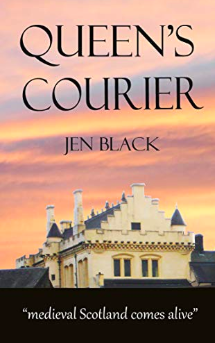
Against a background of political intrigue and Tudor violence, love is not easy to find or sustain. The Queen Dowager repudiates it, Lord Lennox balances Meg’s attributes against those of the Dowager and the lures of Henry Tudor. Matho Spirston falls for Scots lass Phoebe, the English invasion of Edinburgh brings disaster, Meg nurses her guilty secret and Lennox makes his choice.
Amazon UK • Amazon US
The Queen's Letters
(The Scottish Queen Trilogy Book 3)
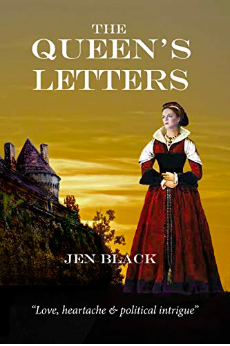
Grief-stricken, Matho puts his life in danger when he volunteers to deliver the Dowager Queen's letters to France. Dodging assassins, befriending teenager Jehan and saddled with the Dowager’s illegitimate, outspoken niece, danger intensifies when he sets out to unmask a powerful enemy and the hangman threatens once more. Meg achieves her dearest wish, but finds it is not all as she imagined.
Amazon UK • Amazon US
Excerpt
From The Queen’s Letters
May 25th 1544, Dieppe
Matho landed feet first, fell onto his backside with a thud that snapped his jaws together and slid toward another drop. A voice called out nearby as he fell over the edge of the roof, dropped into something wet and smelly, and re-bounded onto the hard, cold cobblestoned yard. Pain sprang up in his shoulder as if someone had hit it with a sledgehammer. Snatching a short, swift breath he knew from the stink that he had landed on what the Aydon farmers would have called the muck heap.
The voice came closer; French phrases that meant nothing to him. Making careful movements with one hand jammed against his shoulder, he rolled to his knees. The satchel containing the Dowager’s letters hung askew, and the strap dug into his neck.
“Monsieur! Monsieur!” A brisk volley of rapid French followed. The stable lad, his torch held high, loomed up beside him.
“Help me up,” Matho croaked. His newly learned French had deserted him.
A warm hand helped him to his feet. Matho, bent like an old man and none too steady on his feet, stood in the inn yard and gazed open-mouthed at the thirty-foot drop he had survived; then the rosy glow that lit the sky above the building caught his attention. Sparks flew up against the indigo sky and the hollow roar of the flames grew louder as a portion of the roof gave way.
He half-turned, lost his balance and grabbed the lad’s arm to stop himself falling. “D’ye speak English?”
“Oui, monsieur.”
“My French is not good.” He took a deep breath to steady his heart, still going at a gallop.
“Many English arrive in Dieppe. They speak no French.” The youth’s tone was either an accusation, or dismissive; most probably both.
Matho rubbed a hand across his face. “Aye, well. There’s no call for it back home. What’s yer name?”
“Jehan Bourdain.”
“Help me get my horse, Jehan? The whole lot is going to be burning soon.” He gestured to the smoke and flames stretching high above the roof of the inn and decided against helping douse the fire. The layout of the place was unknown to him, his French had deserted him and his back pained him every time he moved a certain way. In his present condition, he would hinder more than help.
Still gripping the flaming torch, Jehan disappeared into the stable.
“Is there not a lantern you can use, lad?” Matho called, stumbling after him. “You’ll set the stable afire with that thing.” He spied a horn lantern on the window ledge, reached for it and grimaced as a pain, like a hot wire, ran through his back.
Since Jehan was busy saddling his horse, Matho lit the fat candle inside the lantern and doused the torch in a bucket of water.
“Are there other horses here?” he called, breathing in the warm, musty smell of horses, hay and oats.
Muffled by wooden partitioning, Jehan’s voice drifted back to him. “One horse only. The Scotsman took the other before the fire broke out.”
“Well, my advice would be to get yourself and the other horse well away from here before it burns down.”
“I cannot leave. I have nowhere to go.”
“Go home.”
“This is home.” Jehan led Matho’s horse, saddled and bridled, out into the yard.
“The inn belongs to your parents?”
“My parents are dead. I work here, and sleep with the horses.”
Matho grunted. There was no need to ask how the parents had died. The sweating sickness had taken half a village not far from Corbridge last winter, and Phemie’s aunt in Edinburgh much more recently. Such things were commonplace, but unlucky for the lad. “Well, get as far away from the fire as you can.”
Sparks whirled dangerously close on eddies of hot wind, and the roar of the flames grew louder. Harried figures hurled bucket after bucket of water into the building, yet the fire glow captured one window after another. A man staggered out, coughing, and sagged to his knees in the middle of the yard. Four men followed him, a bundled shape carried between them.
“Hurry, lad. Let’s be away from here. And get the other horse. We can’t leave it to burn.”
He checked his pack was tied behind the saddle, soothed his horse and limped across the yard with the tense, trembling animal nudging his back in its hurry to be away from danger. Jehan followed with a sturdy chestnut on a lead rope which he thrust toward Matho.
“I get the saddle.”
Before Matho could complain, the lad raced back into the stable and reappeared with a saddle clutched in his arms, a bridle and a large bag slung over one shoulder. Grinning, he speedily tacked up the horse. “Now we go, yes?”
A roar rent the air, and fierce light lit their faces. The horses snorted and skittered sideways.
“Christ, the roof’s fallen in.” Matho stared at the doomed inn, hardly aware that Jehan had mounted his horse. “And the straw’s alight,” he said with resignation, watching a spark land in the straw bale by the stable door. A shy, tentative flame sprang into life. “Come on, let’s get away from here.”
Jen Black

Jen lives in the lovely Tyne valley between Hexham and Newcastle in north east England, a stone’s throw from the Roman Wall and with a castle that dates from the 1100’s round the corner. Writing and photography are her main interests and walking her Dalmatian Tim twice a day keeps her fit. She has a degree in English Language & Literature and managed academic libraries for a living. Her father’s family have been traced back to the 1700’s on the Welsh and English border—a place she has never been, but her maternal grandfather worked in Skye, and there is one Scottish great-grandmother in the family tree, so if ever there’s time, perhaps there’s more to learn on that score.
Connect with Jen: Website • Facebook • Twitter.
Posted by Mary Anne Yarde at 07:00
Email ThisBlogThis!Share to TwitterShare to FacebookShare to Pinterest
Labels: #MaryQueenofScots #HistoricalFiction #Inspiration #Historical #Scotland
5 comments:

Jen Black12 February 2019 at 11:42
Great to finally see it up, MaryAnne!
ReplyDelete

Penny Hampson12 February 2019 at 17:18
Your books sound exciting, Jen, set as they are in such turbulent times. Will be going on my TBR list.Reply

Mark Noce13 February 2019 at 00:34
An intriguing historical figure for sure, but she scares me a little too ;)Reply

Jen Black13 February 2019 at 15:28
Let me know how you get on with them, Penny.....Scares you why, Mark?
ReplyDelete

Mary Anne Yarde13 February 2019 at 17:29
Great except, Jen and a lovely post!Reply
See you on your next coffee break!
Take Care,
Mary Anne xxx
https://maryanneyarde.blogspot.com/
and the result was so good I decided to copy and paste the whole thing here. The website is a vast one, with loads of book chatter and information. Do check it out!
TUESDAY, 12 FEBRUARY 2019
Historical Fiction author, Jen Black, is talking about the inspiration behind her fabulous series — The Scottish Queen #MaryQueenofScots #HistoricalFiction @JenBlackNCL
Historical Fiction author, Jen Black, is talking about the inspiration behind her fabulous series — The Scottish Queen

Mary, Queen of Scots: "Mary in captivity,"by Nicholas Hilliard, c.1578
I always wanted to write and the stories that interested me always seem to be set in the past. Even at age eleven I was an avid Mary Queen of Scots fan and later I supported – and still do - Richard III.
I didn’t have the confidence to attempt writing until I was thirty and even then, I kept it very much a secret enterprise. It was hard work with a typewriter and Snopak!
My favourite author will always be Dorothy Dunnett, and it was reading her rather austere conception of Marie de Guise that set me researching and thinking about the character. Dunnett’s conception was a very good one, but I began to think of a softer, warmer personality and she slowly grew in my mind. Matho was a minor character in Fair Border Bride and several people told me how much they liked him and why didn’t I write about him?
So, I did. I brought the two characters together in this trilogy. The everyday facts are as close to history as I can get them for everything but the relationship between the Dowager and Matho, because Matho is entirely fictional. I hope Marie had an Englishman who helped her but I doubt it!
The SCOTTISH QUEEN trilogy is filled with action, romance, loyalty and betrayal; set against the turbulent English-Scottish wars of the 1540s, complex characters surround the infant queen of Scotland. Powerful lords fight for their own survival and Englishman Matho Spirston becomes entangled in the plots that surround the valiant Dowager Queen struggling alone to save her daughter’s crown.
Abduction of the Scots Queen
(Scottish Queen trilogy Book 1)

Encouraged by Henry VIII’s promised reward, Matho and Harry set out to abduct the infant Scots Queen and bring her to England even though Matho thinks they have as much chance of success as a "duckling chased by a fox.” Others pursue the same quest – namely Meg Douglas, King Henry's headstrong niece, who flatters Matho into helping her and at the same time snares the interest of Lord Lennox, who alternately woos her and the Dowager Queen. The adventures that follow are swift paced and full of twists and turns.
Amazon UK • Amazon US
Queen's Courier
(The Scottish Queen Trilogy Book 2)

Against a background of political intrigue and Tudor violence, love is not easy to find or sustain. The Queen Dowager repudiates it, Lord Lennox balances Meg’s attributes against those of the Dowager and the lures of Henry Tudor. Matho Spirston falls for Scots lass Phoebe, the English invasion of Edinburgh brings disaster, Meg nurses her guilty secret and Lennox makes his choice.
Amazon UK • Amazon US
The Queen's Letters
(The Scottish Queen Trilogy Book 3)

Grief-stricken, Matho puts his life in danger when he volunteers to deliver the Dowager Queen's letters to France. Dodging assassins, befriending teenager Jehan and saddled with the Dowager’s illegitimate, outspoken niece, danger intensifies when he sets out to unmask a powerful enemy and the hangman threatens once more. Meg achieves her dearest wish, but finds it is not all as she imagined.
Amazon UK • Amazon US
Excerpt
From The Queen’s Letters
May 25th 1544, Dieppe
Matho landed feet first, fell onto his backside with a thud that snapped his jaws together and slid toward another drop. A voice called out nearby as he fell over the edge of the roof, dropped into something wet and smelly, and re-bounded onto the hard, cold cobblestoned yard. Pain sprang up in his shoulder as if someone had hit it with a sledgehammer. Snatching a short, swift breath he knew from the stink that he had landed on what the Aydon farmers would have called the muck heap.
The voice came closer; French phrases that meant nothing to him. Making careful movements with one hand jammed against his shoulder, he rolled to his knees. The satchel containing the Dowager’s letters hung askew, and the strap dug into his neck.
“Monsieur! Monsieur!” A brisk volley of rapid French followed. The stable lad, his torch held high, loomed up beside him.
“Help me up,” Matho croaked. His newly learned French had deserted him.
A warm hand helped him to his feet. Matho, bent like an old man and none too steady on his feet, stood in the inn yard and gazed open-mouthed at the thirty-foot drop he had survived; then the rosy glow that lit the sky above the building caught his attention. Sparks flew up against the indigo sky and the hollow roar of the flames grew louder as a portion of the roof gave way.
He half-turned, lost his balance and grabbed the lad’s arm to stop himself falling. “D’ye speak English?”
“Oui, monsieur.”
“My French is not good.” He took a deep breath to steady his heart, still going at a gallop.
“Many English arrive in Dieppe. They speak no French.” The youth’s tone was either an accusation, or dismissive; most probably both.
Matho rubbed a hand across his face. “Aye, well. There’s no call for it back home. What’s yer name?”
“Jehan Bourdain.”
“Help me get my horse, Jehan? The whole lot is going to be burning soon.” He gestured to the smoke and flames stretching high above the roof of the inn and decided against helping douse the fire. The layout of the place was unknown to him, his French had deserted him and his back pained him every time he moved a certain way. In his present condition, he would hinder more than help.
Still gripping the flaming torch, Jehan disappeared into the stable.
“Is there not a lantern you can use, lad?” Matho called, stumbling after him. “You’ll set the stable afire with that thing.” He spied a horn lantern on the window ledge, reached for it and grimaced as a pain, like a hot wire, ran through his back.
Since Jehan was busy saddling his horse, Matho lit the fat candle inside the lantern and doused the torch in a bucket of water.
“Are there other horses here?” he called, breathing in the warm, musty smell of horses, hay and oats.
Muffled by wooden partitioning, Jehan’s voice drifted back to him. “One horse only. The Scotsman took the other before the fire broke out.”
“Well, my advice would be to get yourself and the other horse well away from here before it burns down.”
“I cannot leave. I have nowhere to go.”
“Go home.”
“This is home.” Jehan led Matho’s horse, saddled and bridled, out into the yard.
“The inn belongs to your parents?”
“My parents are dead. I work here, and sleep with the horses.”
Matho grunted. There was no need to ask how the parents had died. The sweating sickness had taken half a village not far from Corbridge last winter, and Phemie’s aunt in Edinburgh much more recently. Such things were commonplace, but unlucky for the lad. “Well, get as far away from the fire as you can.”
Sparks whirled dangerously close on eddies of hot wind, and the roar of the flames grew louder. Harried figures hurled bucket after bucket of water into the building, yet the fire glow captured one window after another. A man staggered out, coughing, and sagged to his knees in the middle of the yard. Four men followed him, a bundled shape carried between them.
“Hurry, lad. Let’s be away from here. And get the other horse. We can’t leave it to burn.”
He checked his pack was tied behind the saddle, soothed his horse and limped across the yard with the tense, trembling animal nudging his back in its hurry to be away from danger. Jehan followed with a sturdy chestnut on a lead rope which he thrust toward Matho.
“I get the saddle.”
Before Matho could complain, the lad raced back into the stable and reappeared with a saddle clutched in his arms, a bridle and a large bag slung over one shoulder. Grinning, he speedily tacked up the horse. “Now we go, yes?”
A roar rent the air, and fierce light lit their faces. The horses snorted and skittered sideways.
“Christ, the roof’s fallen in.” Matho stared at the doomed inn, hardly aware that Jehan had mounted his horse. “And the straw’s alight,” he said with resignation, watching a spark land in the straw bale by the stable door. A shy, tentative flame sprang into life. “Come on, let’s get away from here.”
Jen Black

Jen lives in the lovely Tyne valley between Hexham and Newcastle in north east England, a stone’s throw from the Roman Wall and with a castle that dates from the 1100’s round the corner. Writing and photography are her main interests and walking her Dalmatian Tim twice a day keeps her fit. She has a degree in English Language & Literature and managed academic libraries for a living. Her father’s family have been traced back to the 1700’s on the Welsh and English border—a place she has never been, but her maternal grandfather worked in Skye, and there is one Scottish great-grandmother in the family tree, so if ever there’s time, perhaps there’s more to learn on that score.
Connect with Jen: Website • Facebook • Twitter.
Posted by Mary Anne Yarde at 07:00
Email ThisBlogThis!Share to TwitterShare to FacebookShare to Pinterest
Labels: #MaryQueenofScots #HistoricalFiction #Inspiration #Historical #Scotland
5 comments:

Jen Black12 February 2019 at 11:42
Great to finally see it up, MaryAnne!
ReplyDelete

Penny Hampson12 February 2019 at 17:18
Your books sound exciting, Jen, set as they are in such turbulent times. Will be going on my TBR list.Reply

Mark Noce13 February 2019 at 00:34
An intriguing historical figure for sure, but she scares me a little too ;)Reply

Jen Black13 February 2019 at 15:28
Let me know how you get on with them, Penny.....Scares you why, Mark?
ReplyDelete

Mary Anne Yarde13 February 2019 at 17:29
Great except, Jen and a lovely post!Reply
See you on your next coffee break!
Take Care,
Mary Anne xxx
Published on February 15, 2019 03:39
February 8, 2019
Change is Everywhere
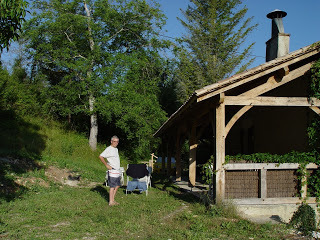 In spite of the Brexit challenge, we have gone ahead and booked the Shuttle and the hotel in Abbeville to get to the mill in June. Tim has had his rabies booster and will have his blood test to ensure it has "taken" in a months time.
In spite of the Brexit challenge, we have gone ahead and booked the Shuttle and the hotel in Abbeville to get to the mill in June. Tim has had his rabies booster and will have his blood test to ensure it has "taken" in a months time. There comes a time when the only thing to do is throw the hands in the air and say "Sod it!" let's do it anyway. Who knows what will come from this political mess? We don't know what the vet in Vergt will be saying about returning Tim to England, but we will have to sort that out when we get there. From his point of view - the vet, not Tim - I cannot see much changing, except that no doubt his fee will have gone up.
The pic is from 2005 and the mill has changed considerably since then. The large pine tree was taken down because it was perilously large and close to the house and the west winds at storm force would have laid it right across the roof. Other trees have gone in various storms and of course, new saplings are shooting up everywhere. There is a swimming pool now instead of all the grass! Everywhere, there is change. Politics change, people change, nature changes. We can't stop it. Sometimes we can't even start it.
Published on February 08, 2019 03:20
February 3, 2019
The wonderful delete button!
I still read the occasional writing blog because learning is good and I need to refresh what I know until it is totally but totally fixed in my head. This morning I found Ruth Harris's piece on deleting....https://annerallen.com/2019/01/stephen-kings-10-rule/] and it is well worth reading. Amusing as well as informative.

· Skillful use of the delete button will help you show instead of tell.
· Will add to the page-turning quality of your book.
· Will help create books readers stay up late to finish.
She quotes Stephen King’s 10% Rule. From Stephen King’s On Writing:
“In the spring of my senior year at Lisbon High—1966, this would have been—I got a scribbled comment that changed the way I rewrote my fiction once and forever. Jotted below the machine-generated signature of the editor was this mot: “Not bad, but PUFFY. You need to revise for length. Formula: 2nd Draft = 1st Draft – 10%. Good luck.”
“I wish I could remember who wrote that note—Algis Budrys, perhaps. Whoever it was did me a hell of a favor. I copied the formula out on a piece of shirt-cardboard and taped it to the wall beside my typewriter. Good things started to happen for me shortly thereafter.”
I think I'm going to do the same. How about you?
Published on February 03, 2019 03:27
January 26, 2019
The mysterious art of guest blogging
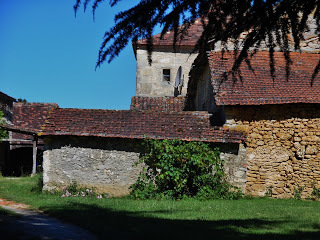 I have never “guest blogged” anywhere, but they say it is one of the best ways to promote a book. So I’ve been reading around the topic and here are some hints and tips I must remember.
I have never “guest blogged” anywhere, but they say it is one of the best ways to promote a book. So I’ve been reading around the topic and here are some hints and tips I must remember. Most important is to think about where your readers are likely to be? Genre is all-important. You’ll reach a lot more romance readers at “Romance University” or “Romance Divas” than general purpose blogs. Look for blogs of authors in your genre with a good reader following.
Use your protagonist’s hobbies, interests, or profession.Location can provide opportunities. If your book is set in a particular place, reach out to travel blogs about the area of your setting. People planning holidays buy more fiction than people arguing about grammar.
The only way to tell if a blog attracts people who really might be interested in your book is to visit and read the posts. Read the comments, too. Leave comments on posts you enjoy. The best place to start querying is a blog you read regularly because you genuinely like it and have an interest in the topics it addresses.
Read the Guidelines and follow them. Write with proper paragraphing, punctuation, capitalization and spelling. Be businesslike, concise, respectful, and don’t lie. A blog query should start with a sentence explaining why you want a spot on that particular blog.
Pitches need not be elaborate. Give possible topics with a few sentences after each about your angle and why you’re qualified to write about it. Ie How to Market Books on Snapchat. I’ve boosted my sales by 25% with this method. I’ll provide a step-by-step how-to.
There’s nothing wrong if your blog has a small following. A powerful reason for guest blogging is to extend your online following. If you’ve been a guest of a big, popular writing blog like The Book Designer, Jane Friedman, Writers on the Storm, Fiction University, Romance University, etc. that’s a big plus, too.
Don’t simply offer another blogger a same material. You can offer to write on the same subject, but don’t simply offer a cut-and-paste. If you have a time window, giveaways, contests, etc, and you want this post to be part of a blog tour, be sure to mention it.
Make sure you will be available in that time window to respond to comments. That way you'll make connections and sell books, so if you’re not available, you’re losing sales.
The most helpful piece I read on guest blogging was by Anne R. Allen (@annerallen) January 20, 2019 and there’s a lot more than my sparse jottings on her blog for those who are interested in guest blogging.
Published on January 26, 2019 05:35
January 21, 2019
Conflict in fiction
 Snowy slopes in BanffConflict is defined as a struggle, often an unconscious one, as a result of opposition or simultaneous functioning of mutually exclusive impulses, desires or tendencies.
Snowy slopes in BanffConflict is defined as a struggle, often an unconscious one, as a result of opposition or simultaneous functioning of mutually exclusive impulses, desires or tendencies. A character may have to decide between right and wrong or between 2 or more solutions to a problem.
attraction and prejudice (Pride and Prejudice is an example)Opposing desiresMismatches and/or uncertaintyincompatible goals It is about being in a new situation where old attitudes and habits war with and hinder the need to change.
Show conflict by showing character responding to their inner compulsions.
What is your hero's desire?
What is his fear?
In the opening chapters, introduce your hero and heroine and their conflicts, both external and internal. What stops them achieving what they want? Add a killer hook, an inventive and clever inciting incident - sparkly, witty and page turning would be good. By chapter 3 the reader should know why this couple are better together than apart. Are these two going on a journey? Is it clear to the reader? What would happen if they failed to achieve the destination? Who would care?
External conflict forces characters together, but internal conflict forces them apart.
Always start with a moment of change, preferably with dialogue. Reveal secrets and drop bombshells in the middle to keep readers turning the page. There should be a Black Moment at the end of the middle section. Conflict should build tension, show motivation, fore a choice and make the character grow.
(Notes, handwritten many years ago, found tucked into a diary. Possibly taken from category romance instructions, but still good for all that.)
Published on January 21, 2019 07:26
January 15, 2019
The Gybford Affair ~ fast paced and exciting historical romance.
 Renewing the cover for The Craigsmuir Affair prompted me to renew the cover for The Gybford Affair. Here it is on the right.
Renewing the cover for The Craigsmuir Affair prompted me to renew the cover for The Gybford Affair. Here it is on the right.Claire Lyons recently published her review of the story, and I have added it below. Now that I've redone covers for two of my romances, I may as well think of improvements for the others!
I purchased an upgrade to Photoshop towards the end of last year, and it certainly makes doing them easier and more pleasureable. I suppose since I first puchased the software, there have been seven or eight upgrades and no doubt each upgrade made using the applications easier. Technology moves so fast in the area of digital and graphic art. If I were leaving school now and choosing a career, I think I would look for something in this area. Conservation also appeals, but I'm not sure if I would choose Art Conservation, or conservation of house and furniture. There are so many careers available today that were simply not possible when I left school
Wednesday, 9 January 2019Good luck!
The quiet life of Frances, Lady Rathmere, is disrupted forever the day Jack, 4th Marquess of Streatham, arrives from London and almost rides her down. At the same time a stranger arrives in the locality, makes a play for her young cousin and scandalous letters accusing Frances of an illicit liaison appear in the national press. Is Jack their author? Frances is convinced he is, and has no idea the trouble those letters are going to bring in their wake.
How liberating for a young woman to become a widow in the Regency era – no more need to marry, a certain financial independence and still welcome in Society. That is unless you have the sort of fortune that would make you a target for a despicable forced and violent marriage…The Gybford Affair has a number of storylines, but the situation of a young widow is at its core. I thoroughly enjoyed this fast paced and exciting historical romance. There was a good balance of drama and everyday life to give a real flavour of the period. There are plenty of characters to add moments of humour and see variety of opinions on issues of the day.Although I felt quite confident who the main romance would be between, there is great tension as to ‘how’ these two will ever get together, and in an unusual twist marriage in itself is not the end or even the start of their story. I felt a great sense of transformation, especially of the male lead, during the book, there is a darkness that slowly lifts and it’s a very positive and happy tale despite moments of great sadness and grief. It was interesting to see the different ways the difficult topic of maternal care were discussed and experienced. It is still fascinating to me how the situation of women has changed over time, and I’m always intrigued to read about women in history and the lives they led. Although this story is focused on the wealthy in Society, their money does not prevent great some of the toughest of life’s hurdles and these are dealt with sensitively.Of course there is a rogue who brings deceit, fear and drama to the story, and he has been created with care and subtlety. His character creates some of the more tense situations in the book and you can’t always be sure how they will end. I enjoyed the changes in pace and tension as the different threads of the story weaved together.
This book would suit those who enjoy historical romance, it’s a great romp and would be fun to read while travelling as it’s very engaging.
About the Author: I’m an ex-academic library manager who lives in the Tyne valley, north east England, with my husband and 6 year-old Dalmatian. I came to writing late, and stay fit (sort of) roaming about Northumberland with my dog. It is a wonderful county for history lovers (and dog walkers!). Everyone knows about the Roman Wall, Vindolanda and all their wonderful Roman finds, but it is equally amazing for castles, bastles, fortified farms and the occasional peel tower. I’ve walked and ridden over a good deal of it. The wall is barely five miles away from my home and we have met people of all nationalities walking there. I take lots of pics when I’m out and pop them on my blog. When I write I’m not out to enlighten, but to entertain and I think I’m always going to have a happy ending. I may have a few tragedies and deaths along the way, but the ending will always be upbeat.I don’t play music as I never notice when it stops, so I can’t be listening, can I?My blog is at http://jenblackauthor.blogspot.comFacebook: Friends of Jen Black https://www.facebook.com/jen.black.775 and on Twitter: @JENBLACKNCL
About the Reviewer: Claire has run Mrs Average Evaluates for five years now, and still writes a regular book review in a local magazine. Her passion is to share great writing and encourage wide reading for learning, pleasure and escapism. She also runs her own business, has four young children and a dog to keep her busy. You are most welcome to join her friendly FB Group, and she’s always on the lookout for Guest Posts on the website.
www.mrsaverageevaluates.co.ukwww.facebook.com/mrsaveragewww.facebook.com/groups/readersandwritersukwww.twitter.com/clairelyonsgrowwww.instagram.com/mrsaverageevaluatesPosted by The Blog at Wednesday, January 09, 2019 Email ThisBlogThis!Share to TwitterShare to FacebookShare to PinterestLabels: Book Review, Claire Lyons, Jen Black, Mrs Average Evaluates, The Gybford Affair
Published on January 15, 2019 05:15
January 12, 2019
Show don't Tell
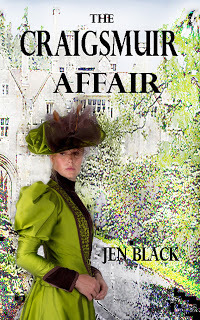 These days we are encouraged, as writers, to show and not tell. I don't dislike it as a writing method; I use it myself, and I enjoy reading it. It involves finding lots of ways to "show" emotions as well as actions, and that can sometimes prove difficult. (As I was writing that sentence I thought if I exchanged "describe" for "show" what would the difference be? Ponder that one for a while!)
These days we are encouraged, as writers, to show and not tell. I don't dislike it as a writing method; I use it myself, and I enjoy reading it. It involves finding lots of ways to "show" emotions as well as actions, and that can sometimes prove difficult. (As I was writing that sentence I thought if I exchanged "describe" for "show" what would the difference be? Ponder that one for a while!)Showing involves investing in the feelings of the POV character: how do they feel at any given point in the story? Why do they do what they do? It also involves the POV character noticing how other people react to them, which really becomes the POV character telling what they see. See what I mean?
These thoughts were provoked by something I saw on Pinterest, but I don't think I should copy it here; instead let me give you the link, and you can seek it out yourself. I hope it will help you past those sticky moments when you simply cannot think how to describe your characters feelings.
https://www.pinterest.co.uk/pin/279293614364130262/?lp=true
Essentially what you will see is many lists of how to "show" emotion. I think I shall be coming back to it from time to time!
PS I decided to change the cover of The Craigsmuir Affair as I wasn't happy with the last one. It looked very Victorian, true; but not very appealing and that was borne out by the fact that not one person has bought it since I put that cover up! So here we are, with a new vibrant cover for Spring! I hope you like it!
Published on January 12, 2019 03:04
January 7, 2019
Statistics, damned statistics
 Statcounter.
Statcounter.Has anyone used the free version?
I have, for as long as I've been running my blog. But lately it seems to have gone haywire. Some days the figures jogs along and then there will be a sudden spike. Someone in Mountain Ash, California, visits and gives me 856 page views. I don't know if I believe in this person or not, but what else can it be? A glitch in the technology? A search bot gone AWOL?
Yet last week I found another location that had racked up 500 odd views in one day, this time from a place midway between Bern and Lucerne in Switzerland. I looked it up on Google Earth and there seems to be nothing there but endless forest. I look at Clustrmap and the stats are entirely different to those on Blogger. Google analytics is different again. It is difficult to know if any of them are to be believed.
Stats are not really so important that I want to pay for installing Statcounter or one of the other systems, and I do wonder if what used to be free is now fast becoming an income stream for someone.
Published on January 07, 2019 04:16
December 29, 2018
Hints and tips on publishing a book with KDP
This is an aid memoire for me in case I decide to do it again, but i thought others might be interested, which is why it is here on my blog. Of course, by the time I decide I want to do it again, the KDP structure might have changed….but currently, this is the link to the User Guide:
https://tinyurl.com/y7ecsj4d
You ought to read it before you start!
By using the headings function on your computer you can format every chapter heading as Heading 1, and this makes it very easy for the system to produce a table of contents for you. You need the cleanest story before you commit to KDP - checked for mistakes and for basics such as the same font throughout, correct punctuation, paragraph spacing. Load Kindle Create to your computer from the KDP site and copy and paste your story into it.
Be patient and wait for it to do the basic formatting. Then have a look at the style choices. There is not much in the way of instruction, but the system works quite well if you use trial and error. There are 4 options for a basic style, and once you have chosen the one you prefer, your story will be formatted in that style. It isn’t fixed in stone. You can choose again and again until you decide which is the one for you.
You can make more decisions about font and size, dropped caps, separators (scene break symbols). It is fun to see what you can do, but eventually you will be ready to move on; once you are absolutely certain you have everything as you intended, press the PUBLISH button and you get a version saved into your files identified by a brown circle. This is what you upload on the normal KDP site - the one you may have used before to self publish. Upload your cover separately, as you used to, and they will be matched together. This had me puzzled for a while until I understood the cover still went through separately.
Now for the paperback. Once the Kindle is complete, KDP offer to do your paperback as well. Take the offer, as it makes it easier than doing it from scratch. Not all the e-book style formats are available, but a good few are. You can still have dropped caps, but the separators revert to ***.
Doing the content is fairly straight forward, but it is best to decide the page size before you begin. A 6”x9” paperback is popular these days. Remember the margins will dictate the number of pages in your book, so you may need to fiddle with them on your original file until you get what you want. The number of pages dictates the size of the spine (and also the cost!) when it comes to the cover, so that is important, too. My last effort had margins so wide my paperback looked like a large-print version.
You don’t need a Contents page in a paperback, but you do need page numbers. Leave the front matter pages unnumbered; make a section break on the final front matter page, do not link the sections, and then start numbering on the opening page of your story so you will have Chapter One, page 1.
Some people like to put the author name and title in headers on alternate pages, but I don’t think it is necessary, and offers more chances for things to go wrong!) I add in my other titles list, and how to contact mein either the front matter or the end pages. I contemplated adding in a cjapter of the next book, but since I don't hae one ready, I let the opportunity go this time.
Once you are happy with the content, upload it on the KDP site. You will be told if there are spelling errors or other glitches and given the opportunity to check and OK them.
Then comes the tricky bit. You need a cover. Not just a front cover as for Kindle, but a front, back and spine too. All in the size you have chosen for your book. I used Photoshop to do mine. Download the KDP template, which looks like this
 ~ in the size you have decided upon for the cover,
~ in the size you have decided upon for the cover, It took me a while to discover that the template size is not fixed; I was required to resize it in Photoshop from 13.27” to 13.47” before it was accepted. It seemed a tiny change, but it was necesary. Ensure your cover pics reach right to the edge of the red zone. Remember your spine cover size depends on the number of pages in your book.
If you want to add an ISBN (purchased by you) you will need to use a barcode generator like Bookow.com and get the barcode e-mailed to you; transfer it to your cover and place it bottom right, very close to the spine fold. It took me some time to realise they wanted a “real” barcode; in Createspace I think I only had to input the barcode number and they added the barcode. It is probably easier to ask them to add one for you, but I already had the (expensive) barcode and was determined to use it.
If you are happy with your cover, save it at 300dpi in PDF format and upload it to KDP. I learned the hard way to save it in Jpeg format as well, in case alterations were needed. In my case, they were!
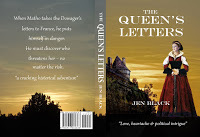
You might get the cover thrown back at you a few times. They will tell you where you are going wrong with it, and you must correct the original and try uploading it again. And again. It takes patience and a lot of time, but is well worth it.
Published on December 29, 2018 03:22
Jen Black's Blog
- Jen Black's profile
- 6 followers
Jen Black isn't a Goodreads Author
(yet),
but they
do have a blog,
so here are some recent posts imported from
their feed.



